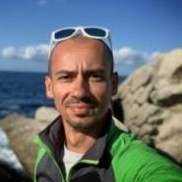Exploration and Evaluation of Geothermal Reservoirs
A special issue of Energies (ISSN 1996-1073). This special issue belongs to the section "H2: Geothermal".
Deadline for manuscript submissions: closed (12 January 2022) | Viewed by 21794
Special Issue Editors
Interests: fluid geochemistry; hydrocarbons; geothermics; georesources
Special Issue Information
Dear Colleagues,
Geothermal energy represents a forceful low-carbon technology in the perspective of a complete energy transition towards green energy solutions. In this framework, a solid and detailed exploration and evaluation of the geothermal reservoirs represents a crucial issue of geothermal exploitation and its development process in terms of both energy production and heat employment. Without effective exploration studies, from the first stages to the more refined final phases, an evaluation of the geothermal potential is difficult to achieve. Geological, geophysical, geochemical, and multidisciplinary studies constitute driving forces for reservoir characterization and allow approaching geothermal exploration in the right way.
This Special Issue aims to collect original research or review articles on both geothermal exploration techniques and characterization and evaluation of conventional and unconventional geothermal reservoirs, including hydrocarbon–geothermal cross-over, from small to large scale and also in densely populated areas. Papers covering geothermal applications for power generation, heat production and storage, mineral extraction, and hydrogen production will also be included.
Dr. Procesi Monia
Dr. Luca Guglielmetti
Guest Editors
Manuscript Submission Information
Manuscripts should be submitted online at www.mdpi.com by registering and logging in to this website. Once you are registered, click here to go to the submission form. Manuscripts can be submitted until the deadline. All submissions that pass pre-check are peer-reviewed. Accepted papers will be published continuously in the journal (as soon as accepted) and will be listed together on the special issue website. Research articles, review articles as well as short communications are invited. For planned papers, a title and short abstract (about 250 words) can be sent to the Editorial Office for assessment.
Submitted manuscripts should not have been published previously, nor be under consideration for publication elsewhere (except conference proceedings papers). All manuscripts are thoroughly refereed through a single-blind peer-review process. A guide for authors and other relevant information for submission of manuscripts is available on the Instructions for Authors page. Energies is an international peer-reviewed open access semimonthly journal published by MDPI.
Please visit the Instructions for Authors page before submitting a manuscript. The Article Processing Charge (APC) for publication in this open access journal is 2600 CHF (Swiss Francs). Submitted papers should be well formatted and use good English. Authors may use MDPI's English editing service prior to publication or during author revisions.
Keywords
- Geothermal energy
- Renewable energy
- Sustainability
- Exploration
- Geothermal potential
- Energy production
- Heat storage
- Multicriteria analysis
- Raw materials
Benefits of Publishing in a Special Issue
- Ease of navigation: Grouping papers by topic helps scholars navigate broad scope journals more efficiently.
- Greater discoverability: Special Issues support the reach and impact of scientific research. Articles in Special Issues are more discoverable and cited more frequently.
- Expansion of research network: Special Issues facilitate connections among authors, fostering scientific collaborations.
- External promotion: Articles in Special Issues are often promoted through the journal's social media, increasing their visibility.
- Reprint: MDPI Books provides the opportunity to republish successful Special Issues in book format, both online and in print.
Further information on MDPI's Special Issue policies can be found here.






